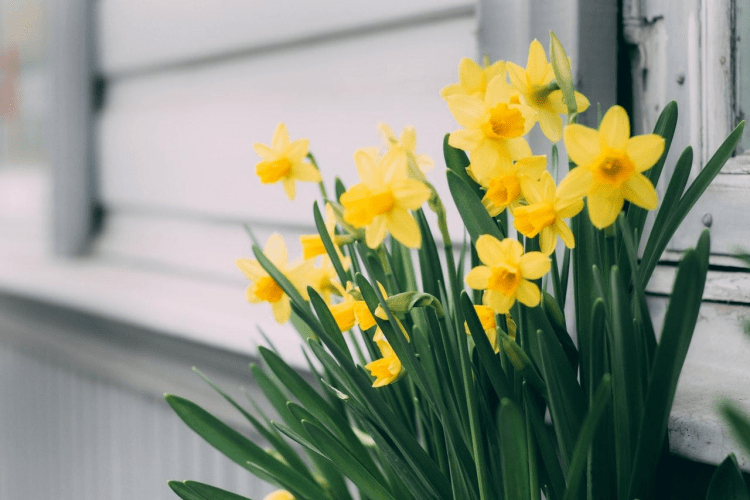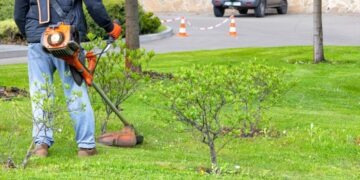How refreshing it is to wake up early in the morning, and when you walk outside your yard, you’re greeted with pretty blooming daffodils in modern planters and a very fresh smell. Ideally, plants need care and cultivation to grow. Sadly, some people take plants for granted and expect them to grow on their own, but this does not apply to all.
Achieving this environment is not an easy task, but learning about daffodils and the conditions they should be in will be beneficial. Here is a guide on what are daffodils and their types that could make you start planting at your home.
What are Daffodils?
Table of Contents
Of all spring flowers, daffodils are known to be the most carefree. They can grow in any place they prefer, and the fascinating thing about them is they could multiply and reproduce fast. So, if you’re a gardener who does not enjoy a long waiting time for your flowers to reproduce, you may consider planting daffodils.
Daffodil flowers are so special that it comes in various shapes, colors, and sizes. Their color ranges from yellow, white, and sometimes contrasting colors of apricot. Although they are undeniably pretty, daffodils are not edible and could pose harm but are not life-threatening. If you ate the bulb of the daffodil, chances are your stomach will be upset.
During springtime, they are usually the determining factors that winter is over, and they are one of the many perennial flowers that bloom vibrantly during spring. With this, they are seen as a symbol of new beginnings. Thus, to grow beautiful blooming daffodils, it’s best to plant them in a location where they could receive sunlight where the soil could be drained well.
What are the different types of Daffodils?
Who would have imagined that there are a bunch of different types of daffodils? Read below about some of the five main types of daffodils that are ideal to be planted this coming spring!
Trumpet Daffodils
Trumpet Daffodils are the type that looks like it has a crown, a “corona,” which is why its name is also called a “trumpet.” They specifically feature prominent cups that are possibly longer than the size of the petals. With their large flowers, it makes them perfect for naturalizing.
This type of daffodil best grows in climate areas and is easily characterized by their beautiful large blooming petals, and they have only one flower attached to a stem. With this, they could brighten up any garden in no time!
Large Cupped Daffodils
Large Cupped Daffodils have big flowers, and their cups are often shaped like trumpets or ruffled in the edges. Some cups would have a different color than the petals they have in different varieties. Examples of this are the Ice Follies, Day Dream, and Salome. Lastly, just like trumpet daffodils, they are also good naturalized and grow as one flower per stem.
Small Cupped Daffodils
Small cupped daffodils have a pleasant fragrance, and each flower stem could produce one medium-sized flower, given that they are small cupped. There are a variety of popular small cupped daffodils, such as Barrett Browning. Also, deers would not be interested in eating them.
Also Read: Designers’ Techniques When Designing a Coffee Table
This type of daffodil is similar to the others but what’s very prominent in it is the size of the cup. Specifically, their corona’s size is less than one-third of its petal’s length, and what makes them even interesting and eye-catching is that their flower color could range from yellow, white, pink, and orange.
Double Daffodil
Double daffodils have a fantastic center flower and possess multiple petals layers on the exterior part. In this type of daffodil, identifying the cups from the petals could be a bit tricky. They could only grow one flower in a regular daffodil, but with a double daffodil, they could sometimes produce two flowers in one stem.
Additionally, they are very romantic and would look very beautiful under the trees. Also, they smell very good and are better as a cut flower. In this way, they could be admired better indoors when placed in a beautiful vase since their stems could harm them from the rain and strong winds. To learn more about how to grow them, you may visit Gardener’s Path.
Triandrus Daffodils
This type of daffodil is also termed as “Angel’s Tears” and could produce at least two or even more flowers in a single stem. They are low maintenance, and their distinct features are their petals which would flare backward and hand downward, similar to the structure of columbines.
Ideally, they would be a perfect choice to have in a perennial garden. But, keep in mind that they love to be in wetter conditions. In growing them, place them where their soil could be well-drained and try to keep them moist. Also, they could tolerate shade, but it is still best when they are in a full sun area.
Takeaway
There are a lot of words that are attached to gardening that are not true. For instance, some may say that planting flowers is not essential and they would just die easily. But, in an actual sense, flowers could bring lots of benefits to humans.
Thus, if you’re looking for a quick guide on what daffodils are, the information stated above might help you. Lastly, always be reminded that planting requires effort, care, and knowledge to make things work.




















